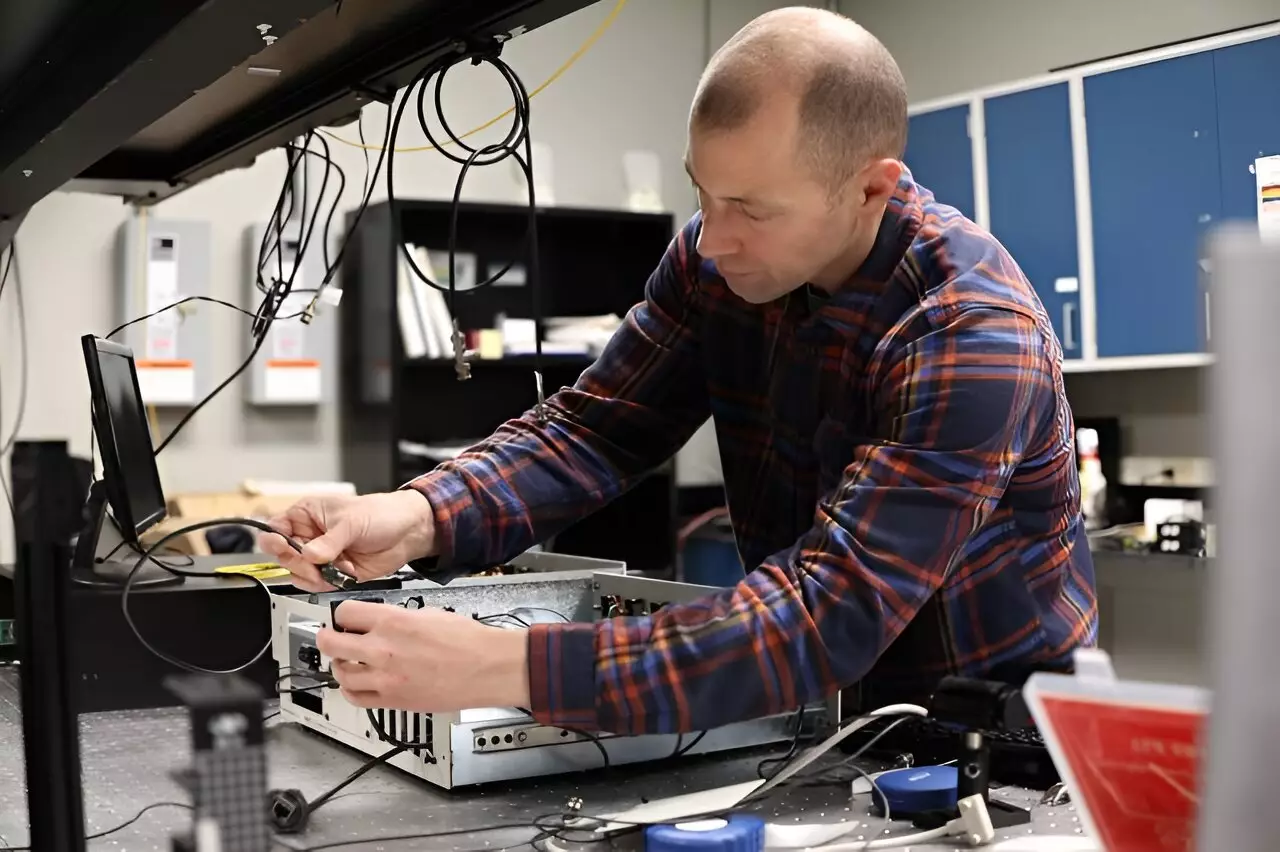Quantum-based cybersecurity has been a hot topic in the realm of information security, promising increased protection against cyber threats. A recent study conducted by researchers at the Department of Energy’s Oak Ridge National Laboratory sheds light on the potential of advanced quantum-based cybersecurity in a deployed fiber link. Their findings, published in CLEO 2023, build upon earlier research conducted in 2015, demonstrating the feasibility of utilizing quantum key distribution for secure communication over fiber-optic networks.
Quantum key distribution is a secure approach to sharing a secret key between two parties, ensuring that the key remains secret even in the presence of eavesdroppers. In the experiment conducted by the ORNL team, a quantum signal was transmitted using a true local oscillator to mitigate the effects of noise in the fiber-optic network. This approach allows for the coexistence of quantum and conventional data signals, paving the way for enhanced cybersecurity measures.
The signal transmitted by the ORNL team was encoded using continuous variables that described the properties of light particles, or photons, in terms of amplitude and phase. By leveraging the continuous variables of photons for encoding, the researchers were able to distribute randomness effectively, enhancing the security of the communication channel. Moreover, this method enables compatibility with existing classical communications systems, making it easier for organizations to adopt quantum-based cybersecurity measures.
According to Nicholas Peters, the head of ORNL’s Quantum Information Science Section, the experiment conducted by the team not only advanced information security but also utilized existing fiber-optic infrastructure, making it a cost-effective and convenient solution for organizations. The use of independent lasers at the transmitting and receiving points, instead of sharing a local oscillator, addresses vulnerabilities that were present in previous methods, elevating the level of security in quantum key distribution.
One of the key challenges in quantum key distribution is maintaining a high signal-to-noise ratio to ensure the secure transmission of data. Brian Williams, the lead author of the study, highlighted the importance of using a narrow energy laser as a local oscillator to act as a filter for background noise. This approach helps improve the signal-to-noise ratio, ensuring that a greater portion of the potential key can be distributed securely.
The ORNL team’s research opens up new possibilities for implementing quantum-based cybersecurity measures in real-world scenarios. Future efforts will focus on replicating the experiment’s results under a broader range of network conditions, paving the way for the widespread adoption of quantum key distribution technology. By addressing the challenges associated with excess noise and enhancing the security of communication channels, this research brings us one step closer to a more secure digital future.


Leave a Reply